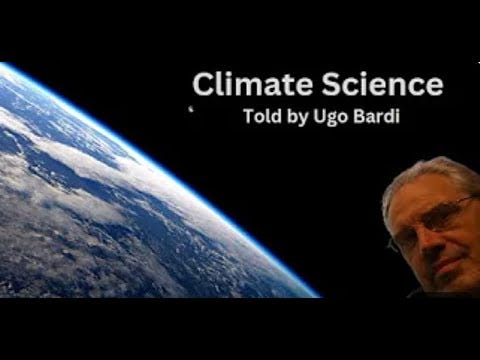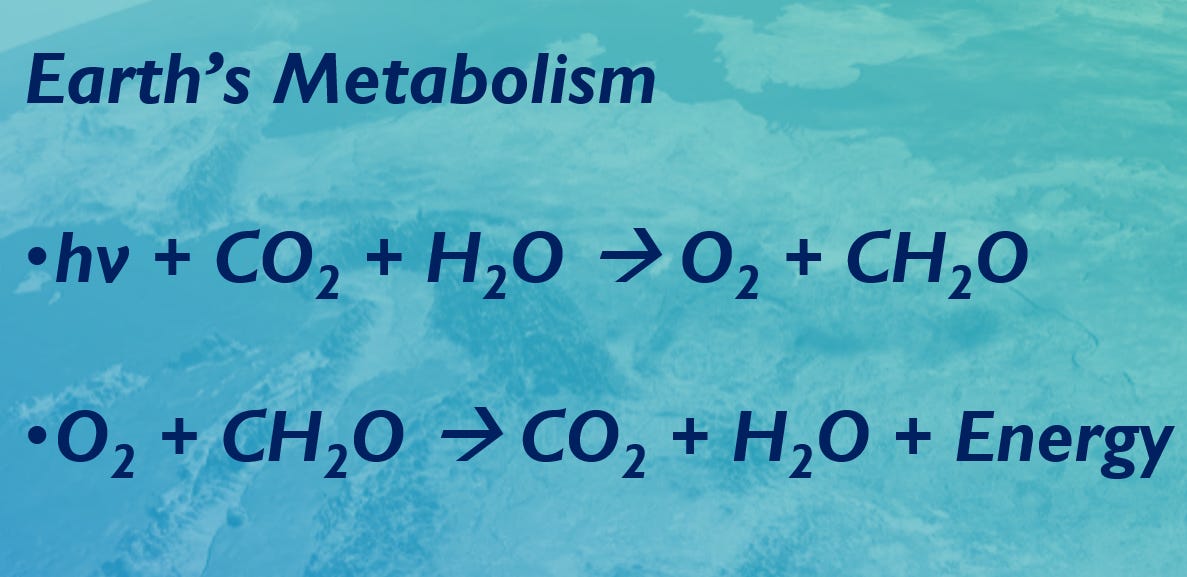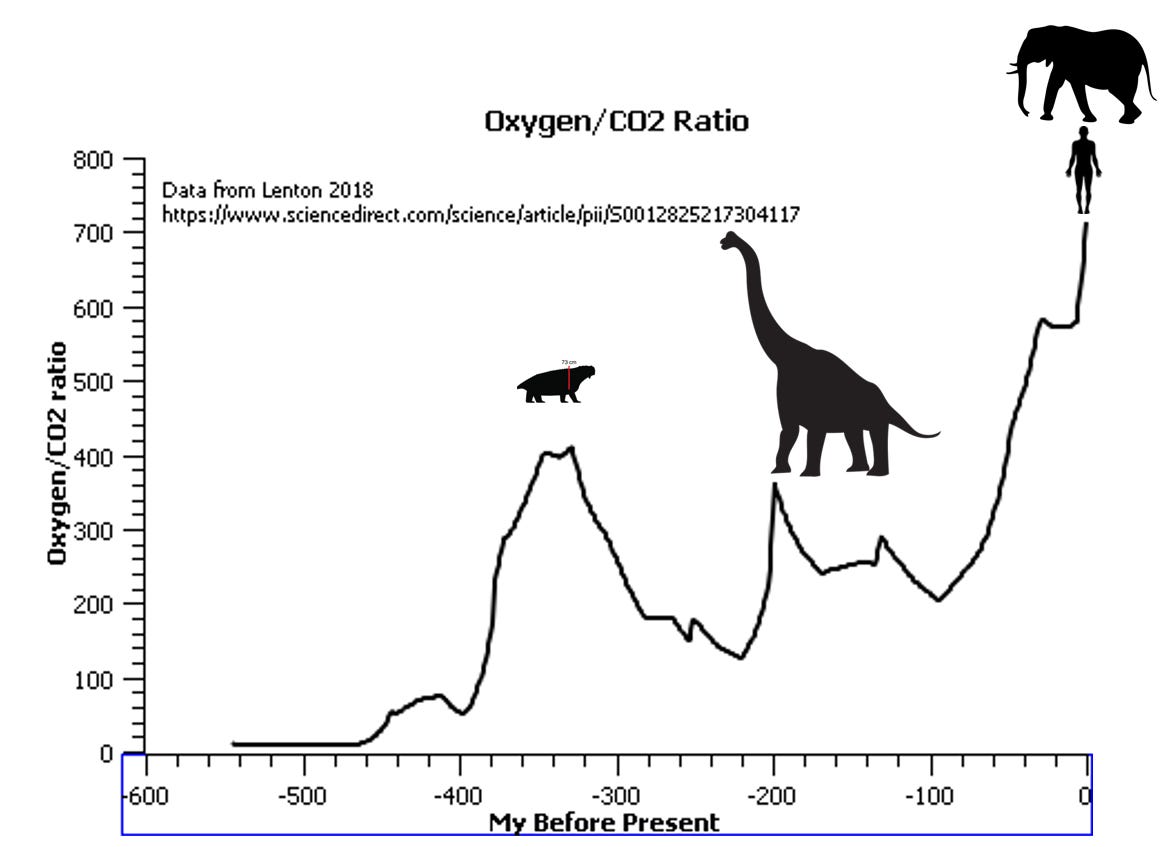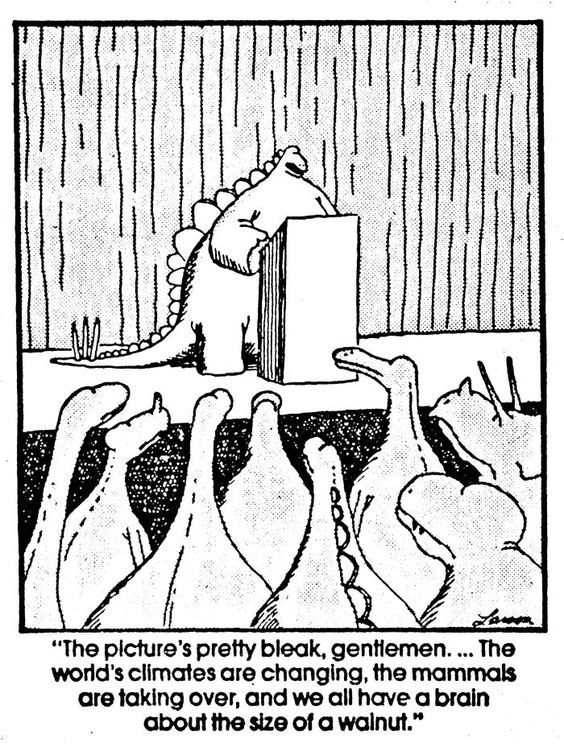The Key to Human Intelligence: a Low CO2 Concentration?
CO2 is not just a pollutant, it may make you dumber
A version of a talk I gave at the conference "Conservation of Ecosystems in Central Asia" in Bishkek, Kyrgyzstan. It discusses the biochemical effect of increasing CO2 concentrations on Earth's ecosystem. (link to Ugo Bardi’s Youtube channel)
Nowadays, spending 36 minutes listening to a talk looks longer than seeing an entire geological era passing. But some people seem to be able to manage this superhuman task, so you may like to do that for my talk, above. It is not exactly the one I gave to the meeting in Bishkek, but a version re-recorded in Italy. But if you are hit by paralysis at the mere thought of doing that (as I would), let me summarize the main points of the idea.
The basic hypothesis I wanted to propose is that CO2 deeply affects Earth’s metabolism and, in particular, the oxygenation of the brain in mammals. It may be the low CO2 concentration of the Pleistocene (the past few million years ago) that allowed the large human brains to evolve. Here is the image I showed during the talk.
So, where do we start from? Earth is a dynamic system kept alive mainly (but not only) by two reactions:
Notice that atmospheric CO2 is a reactant in one of the reactions and a product in the other. Changing its concentration must have effects on the balance of the cycle. And we are changing CO2 concentrations. A lot. (actually, we are already over 420)
So, what’s happening? One thing is Global Greening.
This may be a good thing, but it is rapidly tapering off, and it doesn’t seem to have affected the CO2 build-up in the atmosphere. I don’t think it is helping agriculture so much, either. It increases the yield of crops in terms of weight, but it is mostly because the products contain more water.
Another big thing that’s happening is ocean acidification.
Which is not supposed to be a good thing, although we don’t know how bad it is.
Then there are effects on the human metabolism, which is busy transporting oxygen inside the body and carbon dioxide out of it.
You don’t want molecular oxygen running free inside your body — it is too reactive, and it would do a lot of damage. So, it is transported safely tucked inside red blood cells, bonded to the heme part of a protein called hemoglobin.
Hemoglobin is a “truck” that carries oxygen around. But how does hemoglobin “know” when it is the moment to release the oxygen to feed the cell's mitochondria? When is the moment to uptake it? It is a clever chemical trick called “allosteric regulation.” Without going into the details, it is the CO2 molecule that binds/unbinds to hemoglobin to signal the need to release/uptake oxygen.
There follows that with more CO2 in the atmosphere, less oxygen is taken up in the lungs, and less is transported to the cells of the body. That’s the main factor that makes CO2 a poison. You don’t need to run out of oxygen to suffocate. You just need CO2 to go over 5%, and you die.
Concentrations below 1000 ppm are supposed to be safe, but never forget that none of our ancestors was ever subjected to concentrations higher than ca. 280 ppm for a lifetime. The long-term effects of this condition are unknown.
Note that human brains are not just big. They are densely packed with neurons. Together with some other primates, we have the highest neuron density among mammals. See these data by Suzana Herculano-Houzel:
See? The human brain is in another category in terms of neuron density. But how was it that it evolved now, so recently, no more than a few hundred thousand years ago, and never before in the long history of Earth’s creatures? Herculano-Houzel thinks that our ancestor’s invention of cooking made us so smart. It is because by cooking, we can eat highly nutritious preprocessed food, and that makes it possible to feed a hungry brain that gobbles up about 25 % of the human metabolic energy. It may be correct, in part, but I think there is another explanation that may be more important. Look at these data (note that the elephant also has a lot of neurons, but mostly in the cerebellum, used to maneuver the trunk).
The graph is dominated by oscillations in the CO2 concentrations. The amount of O2 in the atmosphere has remained approximately constant during the past 350 million years or so. There have been various “explosions” of lifeforms on Earth that roughly correspond to high O2/CO2 ratios, which in practice correspond to low CO2 concentrations. The Pleistocene ratio was the highest in history, which may be why these highly encephalized creatures arose.
The big question is: if we need low CO2 to develop intelligence, are we going backward with increasing concentrations? We can’t say for sure, but that happens to be the case.
If this is the case, we are in big trouble, not so much because of global warming as because of “global dumbing.” According to Gary Larsen, the dinosaurs may have experienced something similar.
It seems evident that we are getting dumber and dumber. Just turn on your TV and watch the news.
So, we could go toward our doom without even realizing what’s happening. Which, after all, is exactly what’s happening.


















Thanks for the food-for-thought, Ugo.